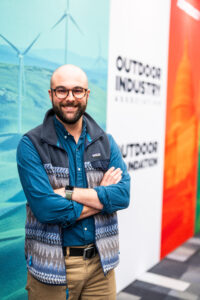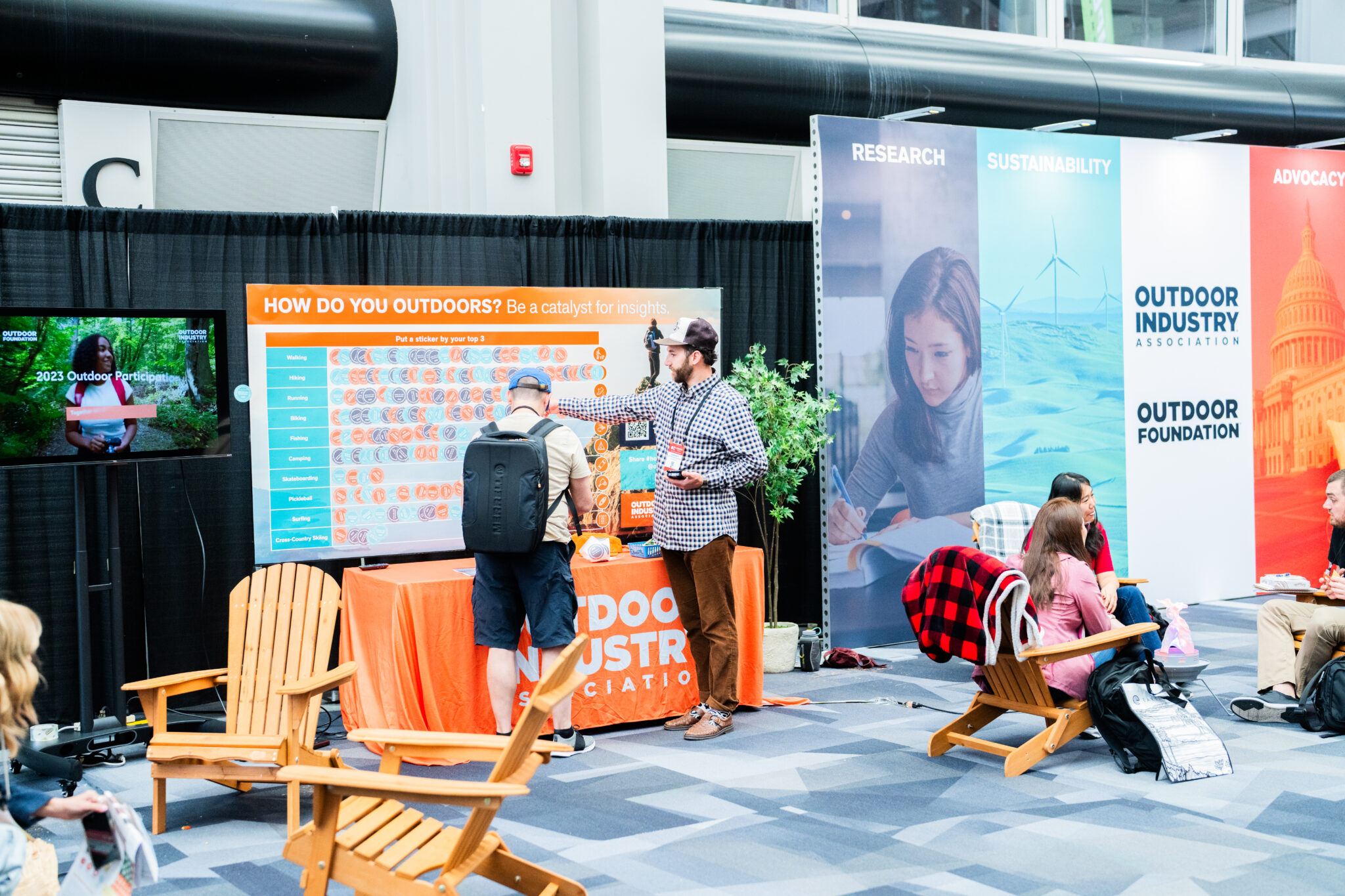By James Pollack, OIA Clean Chemistry and Materials Coalition Legislative Advisor, Attorney at Marten Law
Start your brand’s journey to eliminating per- and polyfluoroalkyl substances (PFAS), also known as Forever Chemicals.
You have probably started hearing a lot about PFAS, a large, complex group of synthetic chemicals found in various everyday consumer products like water-resistant clothing and cookware. A combination of regulatory requirements and consumer demand has created growing pressure on sectors worldwide to achieve PFAS elimination. States have proposed hundreds of potential laws and regulations targeting PFAS in a variety of consumer products. Many of these laws will impact outdoor brands that have used PFAS for durability as well as water and stain resistance. Intimidated? Don’t be. Together, we can replace existing products with more sustainable alternatives to provide customers with products that are just as reliable and durable.
1). Assemble your PFAS team
First and foremost, you have to build a dedicated team to effectively tackle PFAS phase-out. For the most comprehensive and holistic approach, I recommend bringing together a diverse group with a multiplicity of perspectives and expertise. While a chemicals expert may understand what needs to change about your product’s material composition, a designer will have insight into how materials fit into the product, marketing will help articulate why and how your outdoor brand is evolving its product, and sales will have to communicate the transition to buyers and consumers alike. Once you have a team assembled, appoint a champion who will take ownership of the initiative and lead it to fruition.
2). Understand the timeline for PFAS legislation
As PFAS chemicals are generally a state legislative issue for the time being, your brand will have to navigate different states with different deadlines for phase-out and elimination. For example, California’s ban on PFAS in textile articles goes into effect January 1, 2025, Vermont’s ban on all PFAS in food packaging, ski wax, and after-market fabric treatments goes into effect on July 1, 2024, and Minnesota’s ban on the sale of cookware, fabric treatments, juvenile products, ski wax, and food packaging with intentionally added PFAS goes into effect on January 25, 2025.
Once you have a grasp on the state regulations that apply to your product categories, it is important to align your product development cycle with upcoming regulatory deadlines.
Pro Tip: CCMC members have access to a constantly updated Regulatory Tracker to ensure members are aware of new and evolving deadlines around PFAS and other harmful chemicals.
3). Work with your suppliers on a PFAS phase-out plan
After aligning your product development cycle with your state’s regulatory timeline, you should work to communicate key deadlines with your suppliers. There’s a good chance that your suppliers are addressing similar requests from other brands and distributors, so leverage their expertise. Ask them about the alternatives to PFAS they’ve been using and the options that exist for sustainable material evolution.
4). Draw on expertise within the outdoor industry
The outdoor industry has a long history of working together to catalyze broader change and drive innovation. As catalysts, we know that we go farther, and faster, when we work together. In addition to your suppliers, you can leverage the expertise of lawyers, labs, consultants, and other outdoor brands to crystalize your PFAS phase-out strategy.
OIA’s Clean Chemistry and Materials Coalition is designed to support retailers, brands, manufacturers, and distributors in a way that is unique to their PFAS phase-out stage. We provide our members with scalable action plans for eliminating and replacing harmful chemicals and materials, delivering supply chain transparency, addressing recycling and emissions disclosures, and more. CCMC members also gain access to a community network of other brands working on the same challenges, and technical and legislative advisors (like myself) who are here to offer support. For more insight into how CCMC can support your brand, watch our introductory webinar.
5). Design and implement your ongoing PFAS and chemical compliance efforts
The last step, of course, is execution. Now that you have a team, a timeline, and a supportive community of peers and experts, it is time to begin the process of altering your products and supply chain to ensure they are compliant with a variety of state sustainability regulations. This may include steps like testing your product’s material composition, obtaining appropriate certifications, and implementing a restricted substance list. It is important to ensure that all your outdoor brand’s products meet regulatory requirements, so I recommend establishing inventory management practices to track different products’ PFAS phase-out life stages.
The path towards PFAS elimination is not linear–nor easy–but if we take one step at a time and work together, we can be catalysts for sustainable growth. If you’re looking for more robust support and a community to lean on, join me and the Clean Chemistry and Materials Coalition.
About James Pollack
 James Pollack is an attorney at Marten Law based in Seattle, WA, whose practice focuses on consumer product regulatory compliance, emerging contaminants, and environmental review. James leads the firm’s consumer products regulatory practice and helps consumer product manufacturers in a wide array of industries that are working to understand the complicated and shifting regulatory and litigation environments surrounding emerging contaminants. He has extensive knowledge on PFAS regulatory compliance at the federal and state level. James’s clients include textile and apparel manufacturers, outdoor recreational product manufacturers, food product manufacturers, and retailers. He also works with industry associations to update membership on regulatory developments.
James Pollack is an attorney at Marten Law based in Seattle, WA, whose practice focuses on consumer product regulatory compliance, emerging contaminants, and environmental review. James leads the firm’s consumer products regulatory practice and helps consumer product manufacturers in a wide array of industries that are working to understand the complicated and shifting regulatory and litigation environments surrounding emerging contaminants. He has extensive knowledge on PFAS regulatory compliance at the federal and state level. James’s clients include textile and apparel manufacturers, outdoor recreational product manufacturers, food product manufacturers, and retailers. He also works with industry associations to update membership on regulatory developments.
Read more from James on PFAS:
Can Orange Juice Claim to be Green?
PFAS in Consumer Products are Targeted by State Regulators and Class Action Plaintiffs
What Is in EPA’s Billion Dollar PFAS Reporting Rule?
California Bans PFAS in Apparel, Textiles, Cosmetics























